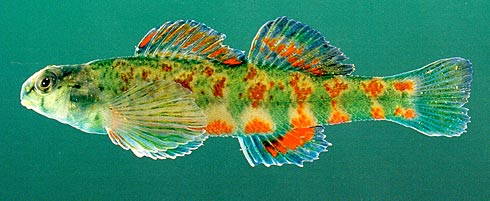The risk of extinction of North American freshwater fish
Nearly 40% of fish species in North American streams, rivers and lakes are threatened, according to the most detailed assessment of freshwater fish conservation in the last 20 years.
700 species of fish are now on the list of ' endangered ' species, up 92% from the 364 species in the 1989 study by the American Fisheries Association. Scientists classify 700 species of fish according to the criteria: vulnerability (230), threatened (190), or endangered (280). In addition, 61 species are thought to be extinct.
The new report was prepared by a group of scientists from the US, Canada and Mexico under the direction of the United States Geological Survey (USGS). They studied the status of freshwater and brackish water fish (species that live between rivers and the sea).
Mark Myers, director of USGS, said: 'The number of freshwater fish continues to decline since the late 1970s, the basic causes include narrow living environment, species weakness and competition of species. not in the original version. In addition, climate change also affects fish communities'.
The most vulnerable groups
High-risk groups include a high-value salmon species in the Pacific coast and western mountains; minnows, sardines and catfish; fish darter in the southeastern United States, pupfish, livebearers, and goodeids, a large fish, native to Mexico and the southeastern United States
Nearly half of the common carp, minnow and sea bass (perch, darter and other relatives) are in danger. Many fish families important for sports or commercial competition are also threatened. More than 60% of salmon species have at least one endangered species or subspecies, while 22% of sunfish species - including well-known species such as black perch, rock perch and blue fish - also listed above. Even the most popular species in the United States, striped catfish, are also threatened.

Endangered darter species (Amicola family).The darter fish is one of the most endangered Southeastern fish species, which are compared to the oatmeal.(Photo: outdooralabama)
The highest risk areas
The areas with the most significant numbers of threatened fish include the United States Southeast, the Pacific coast, the Rio Grande, and the Mexcio bay that do not flow into the sea. The biggest biodiversity and threatening hotspots include Tennessee (58 fish species), Mobile (57), and the Southeast Atlantic River system (34). The central Pacific valley, the West Great Basin, Rio Grande and the rivers in central Mexico also have many endangered fish species. Many endangered species are restricted to just one water passage, Howard Jelks, a USGS researcher and author of the study, emphasized: 'People have expanded to a great many. river basin, causing negative impacts on aquatic ecosystems'.
Severity
In the list of fish in dangerous condition in 1989, 89% remained in conservation status, or even higher risk. Only 11% improved conservation status or removed from the list. The authors of the study emphasize that public awareness and management strategies are essential actions to protect and restore this natural capital.
Noel Burkhead, a researcher at USGS, the lead author of the study and chairman of the AFS Endangered Species Committee, said: 'Fish are not the only organisms that have seriously declined. Freshwater shrimp, snails and mussels are also in a similar or even more serious situation. '
The authors state the above list based on the best bio information available. Stephen Walsh, research author and USGS researcher, said: 'We believe this report will provide credible information for scientists, nature conservation communities and international resource managers to promote conservation, management and restoration. " This is the third document on North American endangered freshwater and brackish fish species, by the Council. Endangered species of the American Fisheries Association.
- Mekong River fish ranked
- Detected 112-year-old freshwater fish in the US
- North American mink is at risk of extinction due to melting ice
- Giant monster in the Amazon River before extinction
- Freshwater species will be extinct soon
- Things you do not know about marine fish statues
- The most terrifying freshwater animals
- Rocket crocodile - the largest freshwater fish in North America
- Admire the freshwater beast
- Horror with 'freshwater monsters' riverbed
- 10 most dangerous species of freshwater aquatic monsters in the world
- The risk of extinction of four precious fish species in the Red River
 Is the magnetic North Pole shift dangerous to humanity?
Is the magnetic North Pole shift dangerous to humanity? Washington legalizes the recycling of human bodies into fertilizer
Washington legalizes the recycling of human bodies into fertilizer Lightning stone - the mysterious guest
Lightning stone - the mysterious guest Stunned by the mysterious sunset, strange appearance
Stunned by the mysterious sunset, strange appearance